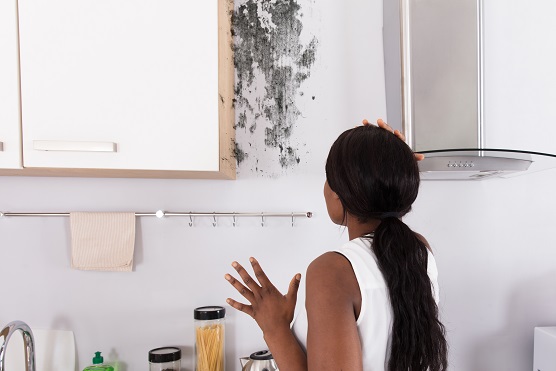Damp is an unwelcome guest in any home, capable of wreaking havoc if not dealt with quickly. Whether it's condensation, rising damp or penetrating damp, the consequences can range from structural deterioration to health issues for any occupants.
In this guide, we'll delve into the common causes of dampness and help you identify the different types. We'll also offer some suggestions on how to prevent it. And if dampness has already made an unwelcome appearance – don’t worry. We've got some tips on how to tackle it head-on so your internal walls can be restored to their former glory.
How do you know if you have damp
Damp can manifest itself in a few ways. Keep an eye out for one or more of the following signs:
- Dampness or moisture on walls or ceilings, accompanied by brown or yellow stains on plaster
- Black mould spores forming on walls, ceilings, or around window frames and doors
- Peeling wallpaper, paint discolouration or crumbling plaster
- A musty odour in certain rooms
- Signs of wood rot, such as deteriorating skirting boards or floorboards
These highlight one or more underlying issues, such as poor ventilation, water leaks or rising moisture levels. Whatever the cause – it's time to act.
Identifying types of damp
You’ll need to find out the type of damp you have before you can treat it. There are generally three kinds – condensation, rising damp and penetrating damp. Each type needs specific treatment depending on the underlying cause.
Condensation damp

Condensation damp occurs in spaces with poor air circulation and little or no heating. This then leads to a buildup of moisture. The telltale sign is the presence of water droplets on walls and windows. If left untreated, mould can thrive, releasing harmful spores into the air. It’s especially dangerous for any occupants with respiratory conditions, like asthma.
Rising damp

Rising damp gets into your walls through moisture in the ground. It’s common in older buildings that don’t have damp-proof coursing (a material barrier to stop moisture seeping in). If you see any damp patches or tide marks near the wall bases, it’s likely to be rising damp. Ignoring it can lead to structural deterioration and eventual decay – so you’ll need to get on the case as soon as you can.
Penetrating damp

Penetrating damp occurs when water enters your home through gaps, cracks, or openings in roofs, walls, windows or doors. Common causes include damaged drainage or broken guttering, as well as heavy rainfall. Unlike rising damp, which typically appears from the ground up, you'll notice damp patches spreading horizontally across walls. If it’s not treated, penetrating damp can lead to widespread structural damage and mould infestation.
Treating dampness in internal walls
Ok – so you’ve discovered damp in your home. Don’t worry. There are various options available to treat it depending on the type, severity and underlying cause. For minor cases, or where it’s been caught early, black mould spray and dehumidifiers can work well.
But if it’s looking a little more serious, you’ll need to find the underlying cause as soon as you can. This might involve removing the wallpaper to find out where it’s coming from, or if it looks like rising damp, installing some damp-proof coursing.
Damp-proofing internal walls

Damp-proofing stops any moisture from getting through your walls. If you’ve already addressed the underlying issue, then you can install physical barriers such as a damp-proof membrane. Unlike damp-proof coursing, which is typically used on external walls, damp-proof membranes can be applied to internal walls. You simply remove any decaying, crumbling plaster, apply the membrane and then plaster over it again.
Dealing with dampness on external walls
To address dampness on external walls, you’ll need to find and fix any defects such as damaged render or broken guttering and drainage systems. Installing damp-proof coursing is another effective measure against rising damp. Or you can apply waterproof coating to external masonry, to stop water finding its way in. Whatever method you choose, you'll be ensuring long-term protection against structural damage.
Avoid damp walls with boiler and heating protection
Warm homes are less likely to have damp because warmth helps keep the air inside dry. When the air is warm, it can hold more moisture without causing condensation to form on surfaces like walls and windows. Plus, warm air promotes better air circulation, which can prevent moisture buildup. Check out some boiler and heating cover options to make sure your home stays nice, warm and damp-free.
Our blog is loaded with more related articles

Plumbing and heating tips
How to prevent and treat damp on your walls
There are several types of damp that can affect your home, and they should all be dealt with as soon as possible. Find out how...
Read more

Plumbing and heating tips
Noisy pipes or boiler? Here’s how to fix it
Sounds from your heating system aren’t always bad – but if your boiler or pipes are unusually noisy, it might point...
Read more

